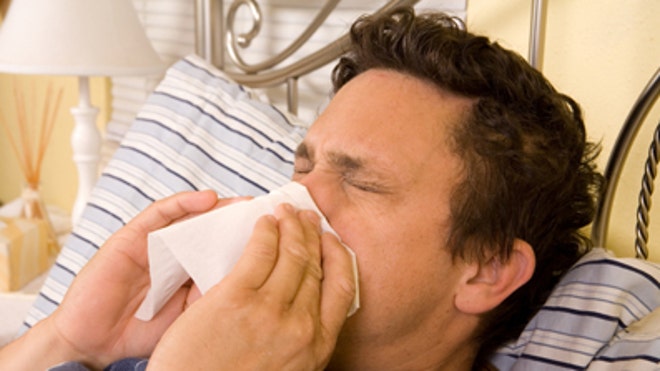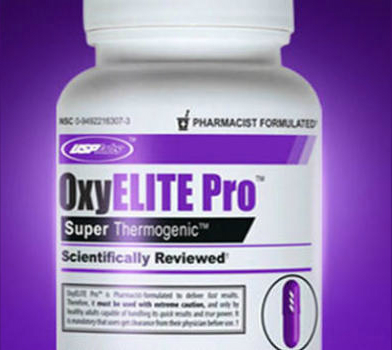
About a month ago Sharon Gilbert was hit with a runny nose, sore throat and a cough. The whole snotty works.
A few weeks later she thought she had recovered. Then her husband Derek got sick, and bam. “Suddenly I started getting all the symptoms [again] and it was worse,” said Ms. Gilbert, a 61-year-old writer in Charleston, Ill.
In the winter that seems to have no end in many parts of the country, people like Ms. Gilbert have been plagued with the seemingly everlasting cold.
That’s partly because the common cold can last longer than many people think—up to two weeks for the principal symptoms and perhaps weeks more for a cough that lingers even after the virus has been cleared away. There’s also the possibility of secondary infections such as bacterial sinusitis.
And some patients might get back-to-back colds, doctors say. It isn’t likely people will be reinfected with the same virus because the body builds some immunity to it. But people can pick up another of the more than 200 known viruses that can cause the common cold, some of which are worse than others.
“When you hear people who have the cold that ‘won’t go away,’ those are typically back-to-back infections of which we see a lot of in the cold weather when people are cohorting together,” said Darilyn Moyer, a physician at Temple University Hospital and chairwoman-elect of the American College of Physicians Board of Governors.
Influenza may get all the attention, but the common cold is the leading cause of doctor visits, according to the National Institutes of Health. Each year, people in the U.S. get about one billion colds, and 22 million school days are lost to the stubborn viruses.
Experts say adults on average get two to five colds a year; school children can get as many as seven to 10. The elderly tend to get infected less because they’ve built up immunity to many viruses. And adults who live or work with young children come down with more colds.
Don’t I know it. For more than a month now my family seems to be playing a game of pass-the-nasty-cold. My husband had a cold and lingering cough for weeks, which we suspect he gave to our infant. Finally I succumbed.
We blamed the purveyor of all germs, our kindergartner. Just as we were all recovering, the infant started day care and brought home a virus and we’re all on round two of apparently a different cold.
Experts say it’s possible that the carrier of germs—in this case our kindergartner—can infect others without having symptoms himself.
“At any given moment if we were to swab you…we’d probably come up with five different rhinoviruses sitting in your nose but you’re not sick,” said Ann Palmenberg, a researcher at the Institute of Molecular Virology at the University of Wisconsin-Madison. Rhinovirus is the most common viral cause of the common cold, accounting for 30% to 50% of adult colds, and there are more than 150 strains of it.
To get infected, the so-called ICAM receptors, which the rhinovirus attaches to in order to enter the nasal cells, need to be open, Dr. Palmenberg said.
“Rhinos are out there all the time, it’s just a question of when you are susceptible,” she said. Factors such as stress, lack of sleep and people’s overall health can make them more likely to get infected. More than 150 strains or genotypes of the rhinovirus have been identified and researchers believe there are probably many more.
Rhinovirus replicates best in the relatively lower body temperatures of the upper respiratory area, such as the nasal passages, sinuses and throat.
Other viruses, such as the less-common adenovirus, can replicate and attach to receptors in the upper and lower respiratory tracts, causing a more serious illness.
Other viruses—including the coronavirus, respiratory syncytial virus and enterovirus—have also been identified as causing cold symptoms. “The most confounding thing of all is that we still haven’t identified the cause of 20% to 30% of adult common colds,” said Anthony Fauci, director of the National Institute of Allergy and Infectious Diseases, part of the National Institutes of Health.
Sometimes a cold that never seems to end could be a sign of something more serious. A cold may result in a sinus infection, bronchitis or pneumonia. And cold symptoms are at times confused with seasonal allergies.
A usually dry cough that lingers after a cold is typically due to bronchial hyperreactivity or tracheal inflammation, doctors say. “After you go through an infection in your respiratory system, you can almost have a transient form of asthma where your bronchial tubes are very highly reactive and very irritated and inflamed,” said Dr. Moyer, of Temple University Hospital.
A review of various studies, published last year in the journal Annals of Family Medicine, found that coughs on average last about 18 days. The report also said a survey of nearly 500 people found that most participants expected a cough should disappear in about a week and believed antibiotics from their doctor would help them. (A big no-no!)
Some experts believe having one cold virus and a weakened immune system could make catching another virus easier. Because the epithelial linings in the nose are weakened when you have a cold, the broken down mucus-membrane barrier may be more prone to picking up another virus.
But others suggest that proteins such as interferons, which are secreted during a cold to help fight the virus, may also boost resistance to getting infected by a second virus, according to Dr. Fauci, of the NIH.
What can a person do to prevent or shorten a cold? Nearly everyone knows someone who swears by taking echinacea or zinc or downing packs of vitamin C.
But doctors say the evidence isn’t conclusive that any of these remedies helps. Some research indicates that exercise and meditation could help prevent colds.
The good news is spring is here, at least officially, so the worst of the winter cold season should be over. Come summer, however, a new batch of viruses emerge and you might find yourself saying hello to the pesky summer cold.
Source: The Wall Street Journal



 Researchers have found that in boys, higher screen time was adversely associated to bone mineral density (BMD) at all sites even when adjusted for specific lifestyle factors.
Researchers have found that in boys, higher screen time was adversely associated to bone mineral density (BMD) at all sites even when adjusted for specific lifestyle factors. A new report published in The FASEB Journal may lead the way toward new treatments or a cure for a common cause of blindness (proliferative retinopathies). Specifically, scientists have discovered that the body’s innate immune system does more than help ward off external pathogens. It also helps remove sight-robbing abnormal blood vessels, while leaving healthy cells and tissue intact. This discovery is significant as the retina is part of the central nervous system and its cells cannot be replaced once lost. Identifying ways to leverage the innate immune system to “clean out” abnormal blood vessels in the retina may lead to treatments that could prevent or delay blindness, or restore sight.
A new report published in The FASEB Journal may lead the way toward new treatments or a cure for a common cause of blindness (proliferative retinopathies). Specifically, scientists have discovered that the body’s innate immune system does more than help ward off external pathogens. It also helps remove sight-robbing abnormal blood vessels, while leaving healthy cells and tissue intact. This discovery is significant as the retina is part of the central nervous system and its cells cannot be replaced once lost. Identifying ways to leverage the innate immune system to “clean out” abnormal blood vessels in the retina may lead to treatments that could prevent or delay blindness, or restore sight.
 You know the saying, “An apple a day keeps the doctor away”? Turns out eating one apple isn’t enough. A new study suggests people who eat up to seven servings of fruit and vegetables a day can cut their risk of death by 42% – and that vegetables may be more important than fruit to your overall health.
You know the saying, “An apple a day keeps the doctor away”? Turns out eating one apple isn’t enough. A new study suggests people who eat up to seven servings of fruit and vegetables a day can cut their risk of death by 42% – and that vegetables may be more important than fruit to your overall health. Scientists say they have taken a step forward in understanding why some people are at greater risk of skin cancer because of their family history.
Scientists say they have taken a step forward in understanding why some people are at greater risk of skin cancer because of their family history. Researchers have suggested that chronic stress in early life causes anxiety, aggression in adulthood.
Researchers have suggested that chronic stress in early life causes anxiety, aggression in adulthood.

